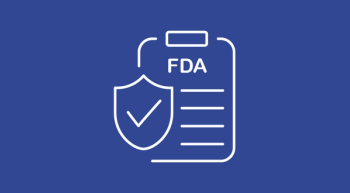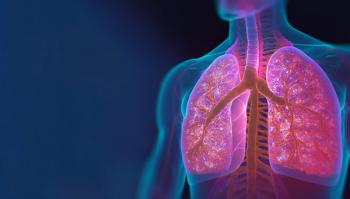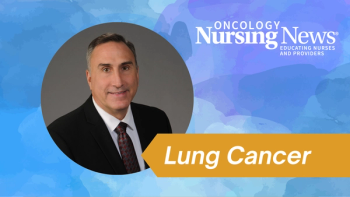
Less Than Half of Eligible Patients Undergo NGS for Non-Small Cell Lung Cancer

Beth Sandy, MSN, CRNP, OCN, says that she would like to see 95% of eligible patients receive biomarker testing in the next 5 to 10 years.
Although targeted therapies often induce better clinical responses and are often less toxic for patients with non-small cell lung cancer (NSCLC) who have tested positive for corresponding biomarkers, less than half undergo molecular testing.
However, Beth Sandy, MSN, CRNP, OCN, says that she would like to see 95% of eligible patients receive biomarker testing in the next 5 to 10 years.
In an interview with Oncology Nursing News®, Sandy, thoracic oncology nurse practitioner, Abramson Cancer Center, Hospital of the University of Pennsylvania, and co-chair of the 2021 School of Nursing Oncology, spoke about her upcoming presentation at the conference, hosted by PER®, adverseevent (AE) management for different targeted therapies, and her hope for the future of molecular testing and targeted therapies in NSCLC.
Oncology Nursing News®: Could you give a brief overview of what your presentations will look like on Saturday?
My presentation is talking about targeted therapies and NSCLC. And in particular, we'll be talking about biomarker testing and how to properly do biomarker testing, what we should be testing for, how we should be testing, and then what those targeted therapies are that correlate with a positive test.
Can you speak a little bit about what adverse event management will look like for some of these therapies?
It's really unique to the different drugs. In non-small cell lung cancer, now, there are 8 different targetable biomarkers. And a lot of these drugs are very different depending on which biomarker you're talking about. For example, EGFR (inhibitors are) one of the oldest ones that we know about, and we know typically rash and diarrhea are common side effects of the EGFR inhibitors. But then you have ALK (inhibitors), which there's a lot–there's 5 approved drugs for ALK-positive, non-small cell lung cancer. And some of them do have a class effect. Some of them have things like CDK elevations and elevated liver functions, mild nausea, but, in general, each of them have some of their own unique side effects, like pneumonitis is more common in some versus others. And the way you take a lot of these are orals, almost all of them are orals. And the way you take these oral targeted therapies do vary. Because some of them are just 1 pill once a day, some of them are 4 pills twice a day. The newest KRAS drug is 8 pills once a day. So, I think oral adherence is a big issue when talking about how to take them. So, it just really varies depending on which targeted agent you're talking about.
What will be the grand takeaway for oncology nurses watching your presentation?
I think the biggest takeaway is that you can never use 1 of these targeted therapies unless you actually find the right biomarker for it. And we know that from a recent ASCO presentation, that less than 50% of eligible patients are getting biomarker testing for non-small cell lung cancer. And that's a shame because we know when these biomarkers are positive, the majority of the time, the targeted therapy associated with that biomarker is better than chemotherapy, and often less toxic.
What changes do you hope to see in molecular testing and targeted therapies in lung cancer over the next 5 to 10 years?
I hope to see 95% of eligible patients getting the proper biomarker testing. Biomarker testing is complex and difficult sometimes, not only to perform the test and get the results, but then to interpret the results. Sometimes it can be really confusing. So, I'd like to see more patients getting the biomarker test. And that will confer then them getting the proper treatment for their lung cancer.
Newsletter
Knowledge is power. Don’t miss the most recent breakthroughs in cancer care.

















































































